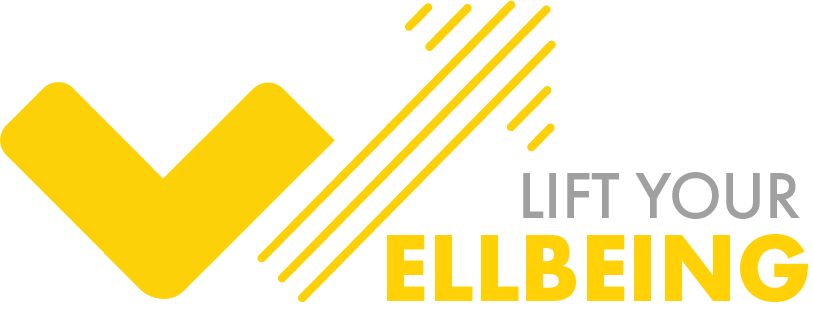Communication strategy for a workplace wellbeing program
We know by now that it is almost essential to have a workplace wellbeing program in place. Many countries around the world are integrating mental health into their workplace safety laws, which means that the employer has a legal responsibility to identify all potential mental health risks in the workplace and demonstrate how they have looked to reduce or eliminate that risk. The 2021 Future Workplace Survey found that 68% of senior HR leaders rated employee wellbeing and mental health as their top priority.
The 2022 Deloitte Mental Health and Employers Report found that the cost of poor employee mental health has increased 25% since 2019 pre pandemic levels through absenteeism, presenteeism & staff turnover.
It's an overused expression but this is why the employee wellbeing program is no longer a nice to have but a must-have. However, as you may know, having a wellbeing program is one thing, getting employees to engage with it is another.
The employee wellbeing program is now a key part of the employee value proposition and the risks associated with inaction around employee mental health and wellbeing is costing businesses significant amounts of money.
“You can have the best employee wellbeing program in the world but if it’s not well communicated, it won’t be well engaged and as such your business will fail to address the health and wellbeing risks and needs of your people and will miss out on the many potential benefits that a healthy and thriving workforce can have. So, this step is critically important. ”
Considerations for your employee wellbeing communication strategy
Your Key People of Influence
Determine your key people of influence across the business, factoring in multiple locations that may exist. The more senior, the better, ideally, we want the communication and promotion coming from the very top and regularly.
Cross Functional Support
We need communication coming from HR and OHS, we need it coming from managers and we need it coming from our peers. Across multiple channels, regularly. Whilst that sounds like a lot, we currently see that wellbeing communications are often left to one person within an organisation and their voice and level of influence will only go so far
External Comms - The Battle For Work & Great Talent
By getting as many people involved in the communication strategy as you can from across the business, you will see a huge increase in the level of engagement.
Factoring in your external communication and marketing of how you support the wellbeing of your staff has become important for two reasons. Firstly, in the battle for the best talent, the most forward-thinking and health-savvy businesses are using their employee wellbeing program as a way to attract top talent away from their competitors.
Secondly, we have seen a new trend emerging whereby potential customers and clients are wanting to know during the tender and proposal process how you support the health and wellbeing of your people, meaning your wellbeing program may be the difference between winning a big contract and not.
Wellbeing Champions & Onboarding New Staff
Depending on the size of your business, you may want to consider developing a network of wellbeing champions. One of our clients, Accounting firm Grant Thornton, does this very effectively. These are typically people who already have a passion for health and wellbeing and are keen to help support and communicate the wellbeing efforts of the organisation within their smaller segment of the business.
The onboarding process is also a great opportunity, businesses that have highly engaged wellbeing programs are ensuring that wellbeing initiatives and cultural norms around self-care and wellbeing are effectively communicated during the onboarding of new staff.
Multi-mode Delivery
Multi-mode delivery is about considering that different people will learn and engage with your wellbeing efforts in different ways. This involves thinking about where people are physically located, how they interact with digital options and what Stage of Change they are in when it comes to improving their health.
Whilst approx. 20- 30% of your workforce will love the idea of our On- Demand Wellbeing platform (cheeky self-promotion) so that they can access a guided run or yoga session on their lunch break, others might not be anywhere near ready for that.
The Stages of Change Theory tells that up to 40% of your workforce is going to require a lot more effort to get them engaged and that’s why the set and forget approach to workplace wellbeing will never work. This 40% who most likely will see the biggest positive impact by improving their wellbeing need regular nudges. Some ways to do this include, posters around the workplace (the back of the toilet door is one of the best spots), links to available resources in emails and on payslips, support and encouragement from direct line managers and regular discussions about health and wellbeing in team meetings.
Whilst it’s hard to measure, the poster on the back of the toilet door explaining the health benefits of drinking lots of water may be just as valuable to someone’s health as another person’s participation in an exercise class and this is why we need to consider multi modes of delivery in our wellbeing program to increase our levels of engagement.
Extra tip: Ask employees how they best learn and what types of experiences and communications they are most likely to engage with.
So there you have it, some key things to consider when developing and most importantly, actioning, your workplace health promotion communication plan.
Next steps - If you’d like to take a deeper dive into what makes makes an employee wellbeing program successful, then download the Lift Your Wellbeing eBook – How To Achieve High Engagement in Employee Wellbeing Programs. You’ll learn the 5 common mistakes when running a workplace wellbeing initiative and how to overcome them.

